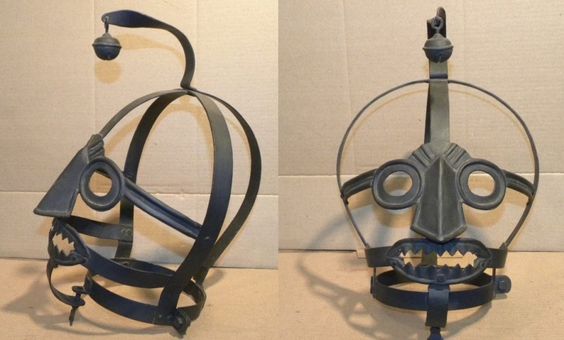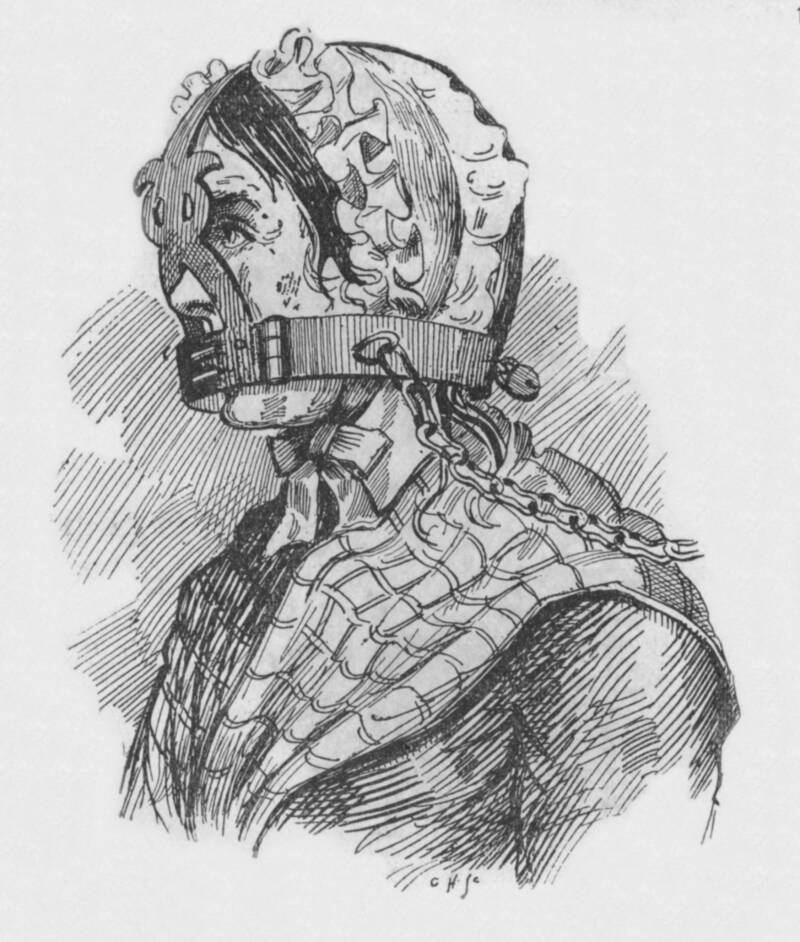The tradition of employing scold’s bridle masks—characterized by a large nosepiece, jagged mouth, hinged neck ring, and a bell positioned atop the head—likely began in Germany between 1550 and 1800. The use of scold’s bridles, also referred to as ‘branks,’ emerged in Britain during the 1500s and later spread to Northern European nations, including Germany. Historically, these devices have been documented as a means of misogynistic punishment aimed at women accused of ‘gossiping’ or ‘nagging,’ though there is evidence of their application on men as well.

The term ‘scold’ served as a legal label for individuals considered to have disrupted the peace through their words—whether through quarrels, drunkenness, or slander. In addition to humiliating the wearer, the bridle was meant to inhibit speech, reflecting a societal inclination to suppress outspoken women or those who did not adhere to established norms. When applied to men, it usually functioned as a punishment for blasphemy or as a way to restrain prisoners.

There were significant gender-based disparities in how such punishments were enforced. Men were more likely to be subjected to stocks or pillories, whereas women were often paraded publicly while wearing these ornate masks, which sometimes featured animal traits meant to further demean them. This particular example includes a bell to generate extra noise and attract attention to the wearer. Most scold’s bridles had gags—occasionally with spikes—that would be placed in the mouth to restrict movement of the tongue.

Documentation of scold’s bridle usage is limited, potentially because it was regarded as an illegal form of torture in England. Nevertheless, reports of its use have been noted as late as the mid-1800s. This specific item was acquired at auction for Sir Henry Wellcome’s museum collection in 1935, though little is known about its specific history.

